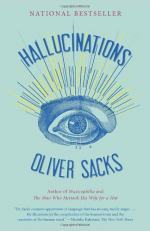|
This section contains 213 words (approx. 1 page at 400 words per page) |

|
Introduction Summary and Analysis
In the Introduction, Sacks discusses the origins of the term "hallucinations," and notes that, for the sufferer, these images are very real. They are startling in their appearance, and cannot be controlled by conscious effort. Additionally, hallucinations can, at times, overlap with illusions. Because of advances in medical technology, we can now pinpoint where certain hallucinations are occurring in the brain. For example, if the portion of the brain that recognizes faces is abnormally activated, the patient may hallucinate faces. Sacks also presents the question as to how much our culture, folklore, and society is built around hallucinations. For example, did elves, fairies, aboriginal art, and other subjects come from the original artists' hallucinations? Do seizures and out of body experiences help found our belief in the divine? Sacks closes the introduction by noting that his information will focus on "organic...
(read more from the Introduction Summary)
|
This section contains 213 words (approx. 1 page at 400 words per page) |

|




